Today we are checking out one of Kingston’s latest DDR5 memory, – the Kingston Fury Renegade DDR5 memory series. They announced the Fury Renegade DDR5 in July 2022, and now we have the chance to test both the RGB and non-RGB variants. We have the 32GB (2x 16GB) Fury Renegade DDR5-6000MHz CL32 memory kit in non-RGB and RGB flavors. Considering that this is a 6000MHz memory kit with a CAS Latency of 32, I have high expectations for this particular memory kit. So, let’s find out how the Fury Renegade DDR5 memory kit performs in our review below.
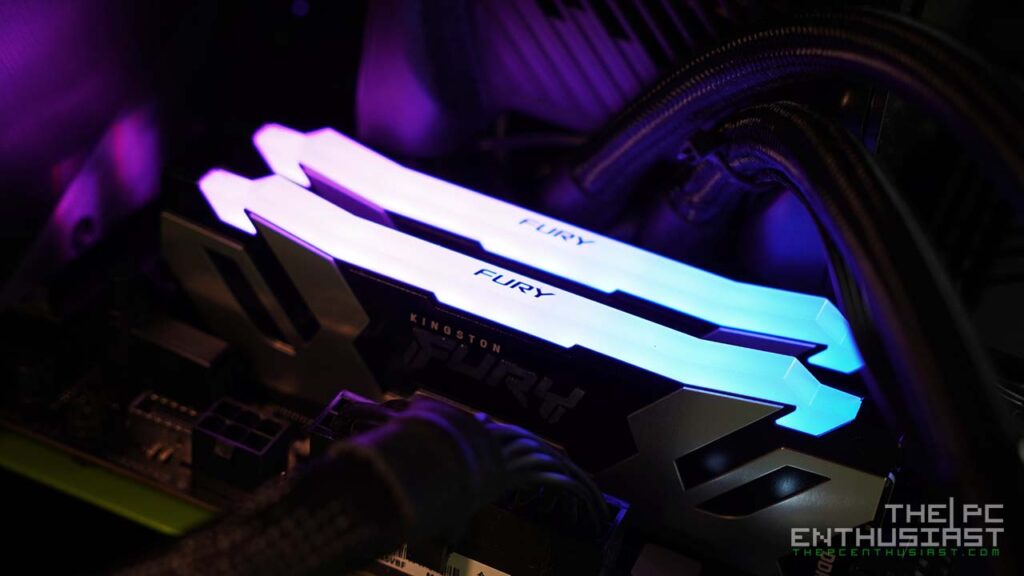
Kingston Fury Renegade DDR5-6000 CL32 32GB Memory Kit Review
The Kingston Fury Renegade DDR5 memory family is available in RGB and non-RGB variants. It offers up to 64000MT/s speed and CL32 timings. We have the 6000MHz CL32-38-38 kit here, so the memory kit we are reviewing today isn’t the fastest Kingston has to offer. These DDR5 memory kits are also Intel XMP 3.0 certified, and you have to enable the XMP setting from the motherboard’s BIOS menu to activate the advertised speed.
The non-RGB variant features an aggressive design with a somewhat low-profile heat sink. Meanwhile, the RGB variant is slightly taller and uses infrared technology to sync the RGB lighting. Although, generally speaking, both variants look similar. The difference is the RGB variant has RGB lighting, and it’s also slightly taller than the non-RGB variant.
Capacity-wise, the Fury Renegade DDR5 is available in 16GB per stick or kits of 2 for a total of 32GB. The 6000MT/s kit has a voltage of 1.35V. Meanwhile, the 64000MT/s variant has a slightly higher voltage rating of 1.4V. Kingston also mentions that these kits are qualified by the leading motherboard manufacturer, meaning we expect them to work out of the box with popular motherboards in the market.
My test system is a Z690 motherboard, but I am guessing it will also work with the upcoming Z790 motherboards. However, I’m not sure how it will perform with AMD’s X670E AM5 motherboards. But I am positive/hoping that it will work as well. We will find out soon when I get my hands on the new X670E motherboards.
Below are the specs of the Kingston Fury Renedage DDR5 memory. After that, let’s take a look at the memory itself and see some benchmark results.
Kingston Fury Renedage DDR5 Memory Specifications
| Capacities | Singles: 16GB Kit of 2: 32GB |
| Frequencies | 6000MT/s, 6400MT/s |
| Latencies | CL32 |
| Voltage | 1.35V, 1.4V |
| Operating Temperature | 0°C to 85°C |
| Dimensions | 133.35 mm x 39.2 mm x 7.65 mm (non-RGB) 133.35 mm x 44 mm x 7.66 mm (RGB) |
For the latest pricing and availability: (#ad)
Kingston Fury Renegade DDR5 RGB Memory is available on Amazon.com here.
Kingston Fury Renegade DDR5 (non-RGB) Memory is available on Amazon.com here.
Packaging and Closer Look


Above are the front and rear views of the retail packaging of the Kingston Fury Renegade DDR5 memory. The retail packaging for the RGB and non-RGB are somewhat similar, but there are a few differences since the RGB variant has lighting features.
I noticed that the color of the heat spreader on the retail box does not accurately represent the actual color of the heat spreader. It looks grayish on the box. But in person, it looks like a brushed-metallic silver. At first, my initial impression is that the memory kit looks ugly due to the gray color. But I’m glad that when I open the box and held the memory kits in my hand, they actually look good.


Both the Fury Renegade RGB and non-RGB variants look similar. The only difference is that the RGB variant is slightly taller because of its RGB lighting and light diffuser. Looking at the photos above, the first two sticks from the left-hand side, are the non-RGB sticks, and the next two are the RGB variants.
I tried prying the heat spreader to see what was under the hood. But it was a bit difficult to remove and I do not want to ruin or damage these memory kits. I still need these kits for a future PC build, and I need them in top condition.


Above, you can see the Fury Renegade DDR5 non-RGB installed on the Asus ROG Strix Z690-I Gaming WiFi motherboard. In my opinion, it looks good despite not having any RGB lighting.
The Fury Renegade DDR5 RGB


The Fury Renegade DDR5 RGB variant is slightly taller. This kit would look nice on a build that has RGB lighting. One impressive thing that I think no other memory stick on the market has is Kingston’s approach to synching the RGB lighting. Correct me if I am wrong, but so far I have not encountered another memory kit that uses infrared for synching its lighting effect.
The company uses a patented Kingston FURY Infrared Sync Technology. According to Kingston, this ensures the RGB lighting effects stay in perfect lockstep. When I was testing this memory, the RGB lighting on the two memory sticks do sync well with perfect timing.
Kingston FURY Infrared Sync Technology
I took a closer shot at Kingston’s infrared sync technology. You can see those tiny sensors near the fingers of the DDR5 memory. If you block these sensors, the RGB lighting tends to go out of sync.
Some RGB Action


As you can see from the photos above, the RGB lighting is synchronous. Okay, time to see some numbers.
Test System Used

In testing the Fury Renegade DDR5-6000 CL32 (2x16GB) memory kit, I’m using a Z690 motherboard powered by an Intel Core i7-12700K. Below are the rest of the specifications of the system:
| Operating System | Windows 10 Pro 64bit |
| Processor | Intel Core i7-12700K |
| CPU Cooler | MSI MEG CORELIQUID S360 |
| Motherboard | Asus ROG Maximus Z690 HERO |
| Memory | Kingston Fury Renegade DDR5-6000 CL32-38-38 32GB |
| Graphics Card | MSI GeForce RTX 3080 Ti SURPIM X |
| OS Drive | MSI Spatium M470 1TB Gen4 SSD |
| Power Supply | Seasonic Prime 850W Titanium |
| Chassis | Thermaltake Core P5 |

Kingston Fury Renegade DDR5-6000MHz CL32 Benchmarks
AIDA64 Memory Benchmark Results


I was curious how a DDR5-6000 CL32 memory kit fares with a slightly faster DDR5-6200 but with a higher CL40 timing. As you can see from the result above, the DDR5-6200 is still slightly faster. But the performance gap is so slim that it’s not noticeable in real-world use.
Cinebench R23 Benchmark Results

Cinebench R23 is primarily a CPU benchmark. The performance differences between these memory kits are very small and negligible. It means that when it comes to CPU-intensive workloads, there won’t be any significant performance difference regardless of the memory speed.
I’m surprised to see that the RGB variant somewhat fell behind in the multi-thread test. I’m not sure why, probably some fluke with the test system. Or maybe it was a lie that RGB makes your system faster? Joke aside, DDR5 memory speed doesn’t affect much when it comes to CPU-intensive workloads.
By the way, the DDR4 memory was also tested with a Z690 motherboard, MSI Tomahawk DDR4 to be exact. And it was tested with the same CPU. Only the motherboard was changed.
3DMark Benchmark Suite





Some of you might be wondering if there’s any benefit of a faster DDR5 memory when it comes to gaming. Well, as you can see from the results above, there’s not much difference at all. My DDR4-4000 memory kit can keep up with the DDR5 memory kits. However, there are some improvements and benefits if you are using a faster 6000MHz memory kit (or above) with a low CAS Latency of CL36 or CL32.
The Kingston Fury Renegade DDR5-6000 CL32 performed remarkably well on the graphics tests. It even outperformed the faster DDR5-6200 memory kit in most tests. But it fell behind on the Fire Strike benchmark. Nevertheless, I got great results in most of the tests.
Shadow of the Tomb Raider Game Benchmark

I didn’t test a bunch of games since the results would be more or less similar. As you have seen from the 3D Mark benchmark results, the difference between each memory kit isn’t that huge. But it does scale consistently. The higher the clock speed and the lower the latency of the memory kit tends to perform better.
I tested the memory kits using the Shadow of the Tomb Raider’s built-in benchmark since it’s very consistent. As I suspected, memory kits with higher frequency and lower timings will perform better in games. The Kingston Fury Renegade DDR5-6000 performed well in Shadow of the Tomb Raider.
It outperformed the other memory kits with similar frequencies but with higher CAS Latency timings. It also outperformed the faster DDR5-6200 memory kit but with a higher CL40 timing.
PCMark 10 Benchmark

Last but not the least, I tested the memory kits using the PCMark 10 benchmark test. This test is a comprehensive set of tests that covers a wide range of activities from everyday productivity tasks to demanding work with digital media content. It’s primarily divided into three categories: content creation, productivity, and essentials.
In this test, the Renegade DDR5-6000 CL32 performed well. There’s basically no difference between the RGB variant and the non-RGB variant. They perform similarly in general. So this means, RGB doesn’t add or increase game frame rates at all! Again, joke aside, what surprised me is the Sabrent Rocket DDR5, which also has a trick up its sleeve. We’ll review the Sabrent Rocket DDR5 next. Keep an eye out when it goes live.
Pricing and Availability
The Kingston Fury Renegade DDR5 memory series is now available. I’m not sure what’s the manufacturer’s suggested retail price of these memory kits. But right now, the 32GB kits are selling north of $200 USD. Meanwhile, the non-RGB variant is slightly cheaper compared to the RGB memory kits. For the latest pricing and availability, kindly follow the links below.
For the latest pricing and availability: (#ad)
Kingston Fury Renegade DDR5 RGB Memory is available on Amazon.com here.
Kingston Fury Renegade DDR5 (non-RGB) Memory is available on Amazon.com here.
Kingston Fury Renegade DDR5-6000MHz CL32 Review Conclusion
I’m impressed with the performance of the Kingston Fury Renegade DDR5-6000MHz CL32 memory kit. I think the DDR5-6000MHz speed with lower CAS latency timings may be the sweet spot in this generation. Both the non-RGB and RGB variants share a similar heat spreader design. It has neutral black and metallic silver aesthetics, but depending on your taste, it may or may not be too aggressive to your eyes.
The RGB lighting on the Fury Renegade DDR5 RGB looks nice and it syncs perfectly with the adjacent memory stick. This is thanks to Kingston’s Infrared Sync Technology. Just don’t block the infrared sensors in between each memory stick so that it won’t go out of sync.
When it comes to performance, well you have seen the results. If not, scroll up and check it out. TL;DR, it is fast and the lower CAS latency timing helped. There’s no performance difference between the RGB and non-RGB variants of the same speed. Only the aesthetic is different. It’s good that Kingston made two flavors so that people will have the option.
At the time of publishing this review, DDR5 memory prices are starting to drop. DDR5 prices are still a bit expensive, but prices are better compared to when they were first released in the market. Still, I would like to see DDR5 prices drop further. But that may not come until DDR4 becomes irrelevant and DDR5 kits are the new standard.
At the end of the day, the Kingston Fury Renegade DDR5 (RGB) is an excellent memory kit. I don’t have any problems recommending them at all. And it would be much easier to recommend them when DDR5 prices drop further.



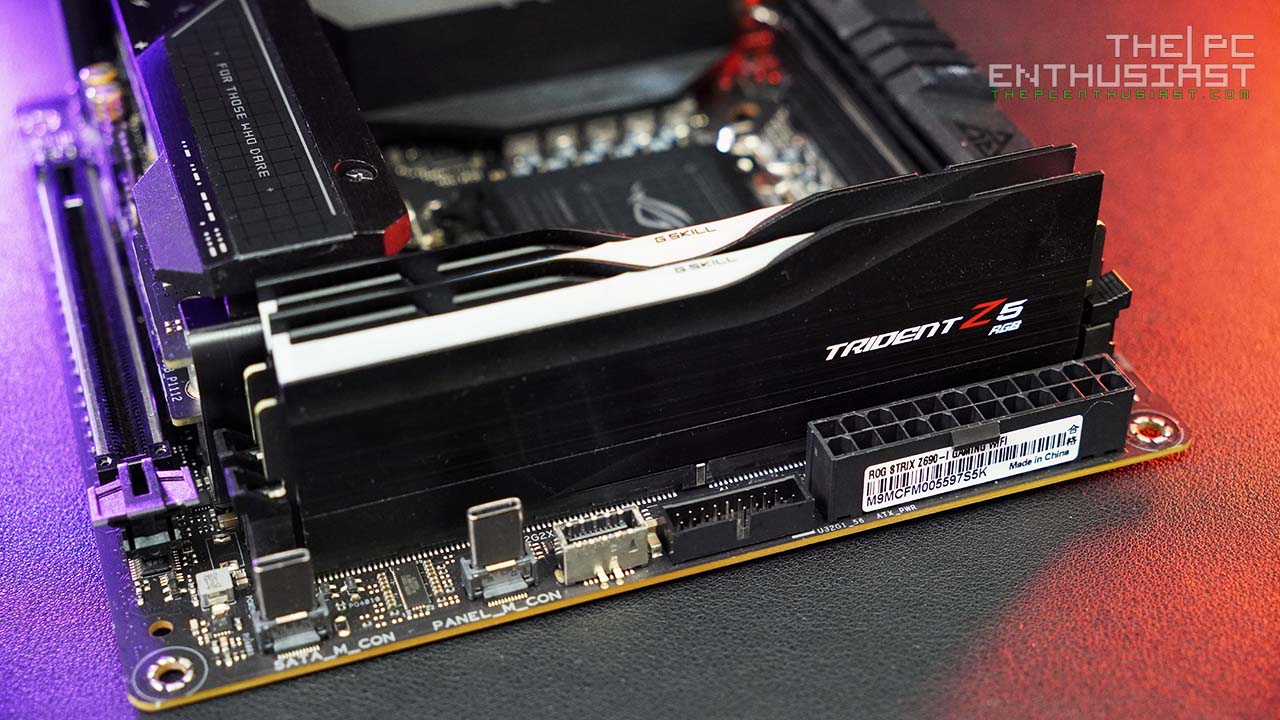
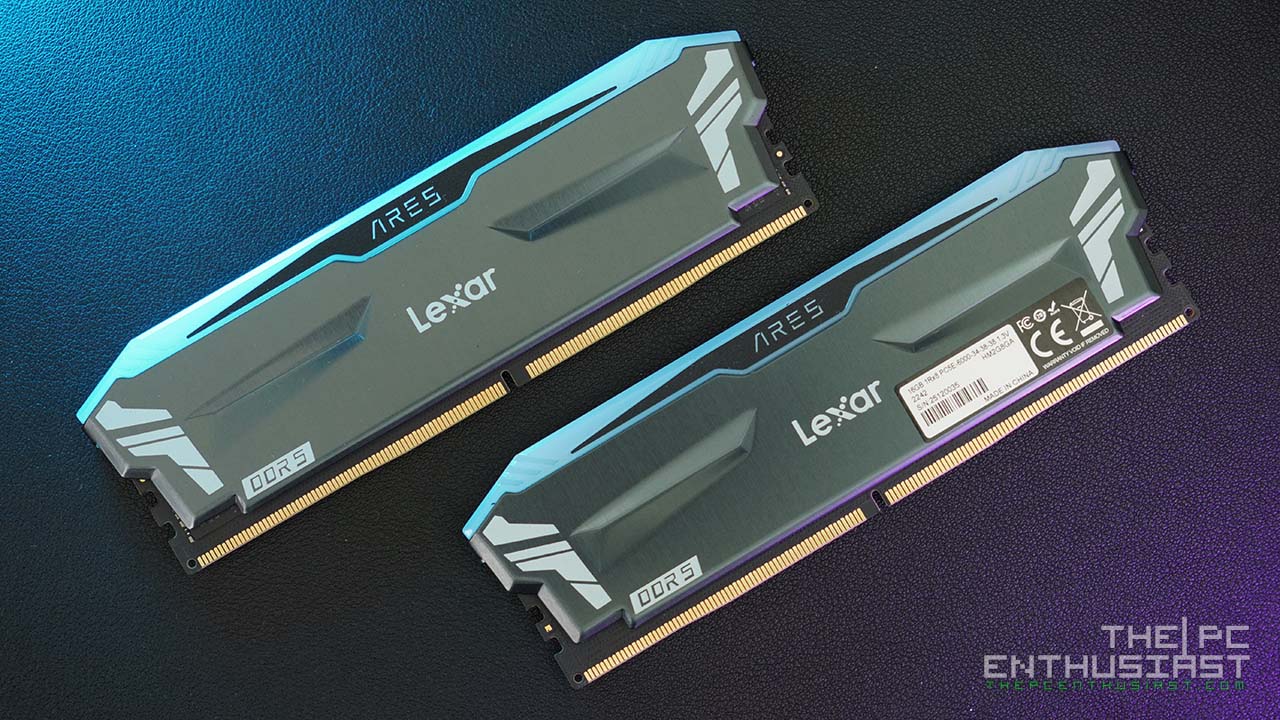
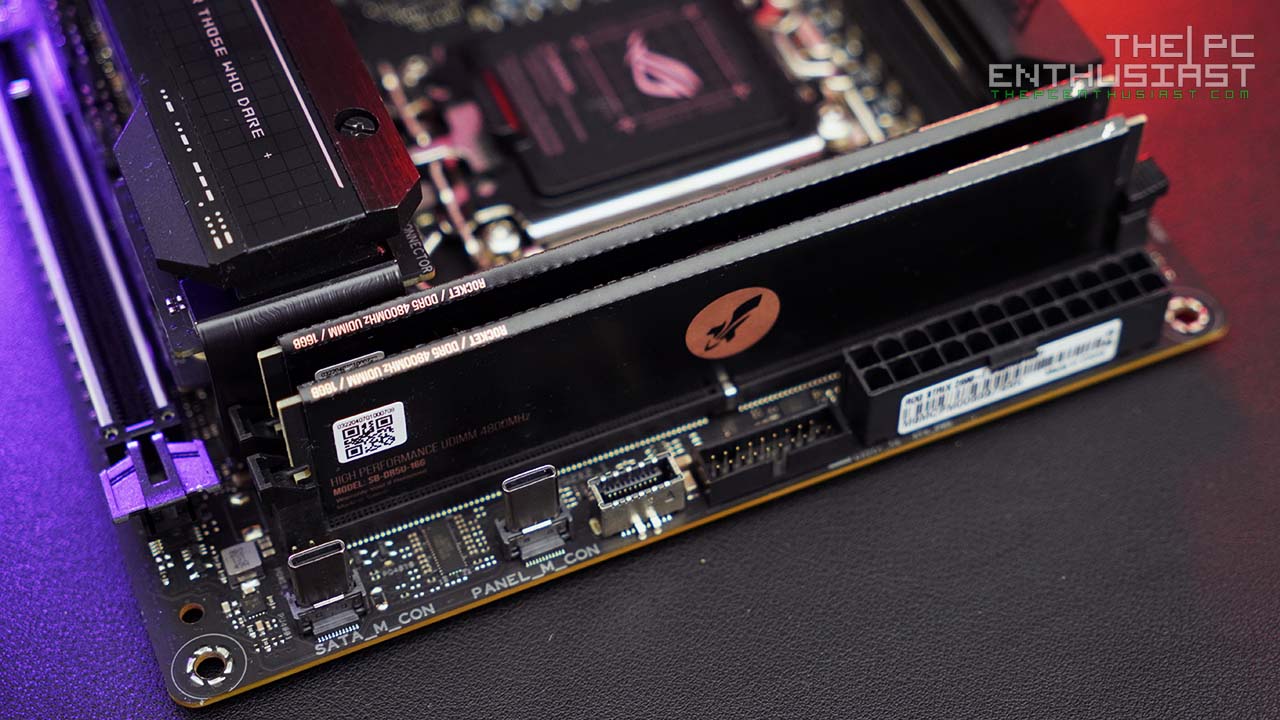
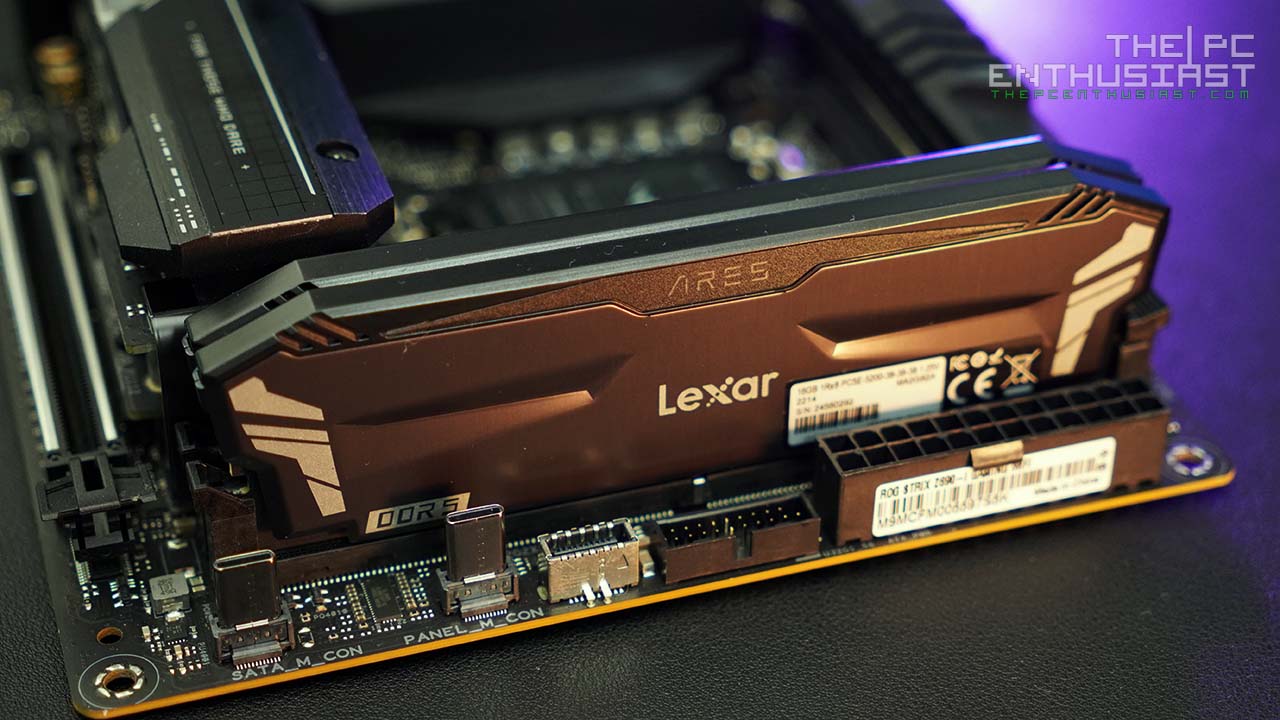
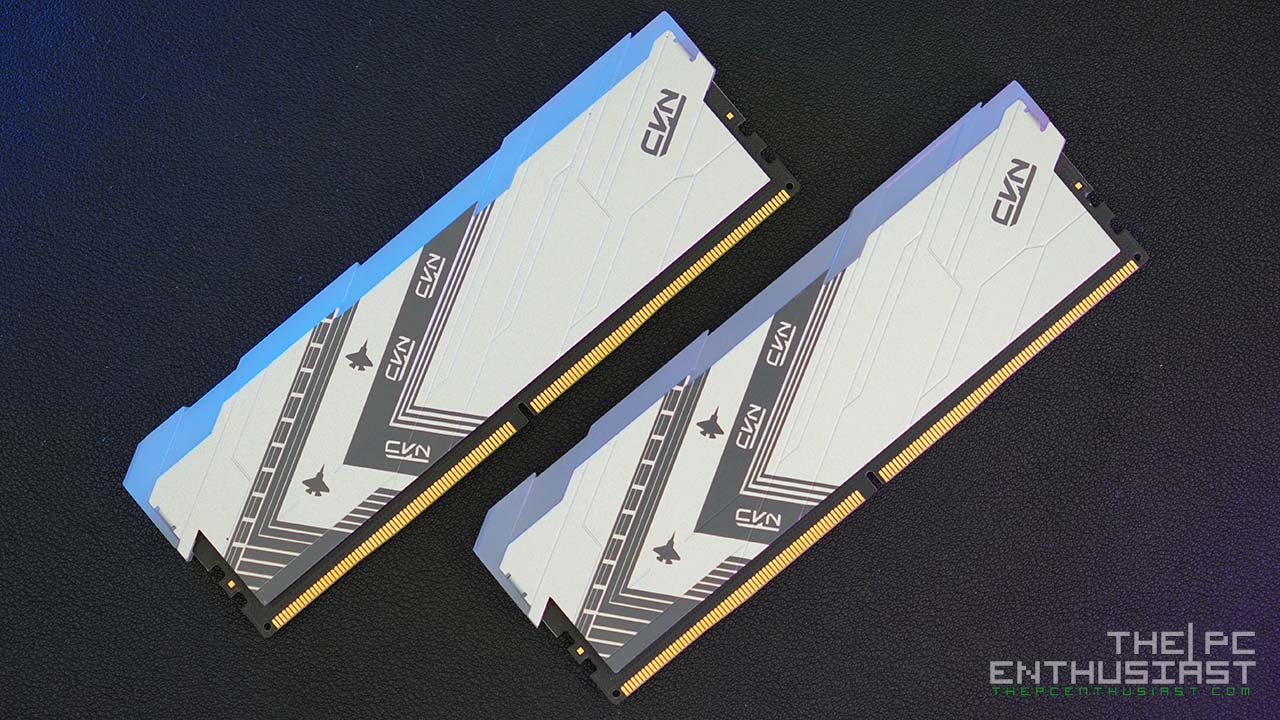


Thanks for the review, I have bought a set for my new Raptor Lake build. CPU-Z shows that the modules are using SK Hynix chips, so there should be scope for overclocking too.
Yes, probably it can go up to 6400MHz+ and/or a lower/tighter timings. I haven’t played with OCing it though since memory tweaking can be time consuming. Got to make sure everything is stable.
Hey Peter, good review! Just wondering if you know if the 6000mt/s kits are able to OC to 6400 (effectively getting the same sticks for cheaper)? From what I can tell, they are the same designs, just rated differently– which means they should be able to do those speeds? thanks!
I have yet to try it. But yes, I think you can push it a bit further to 6400MHz. I think they are similar. Although, I’m not 100% sure if Kingston uses the same memory chips on both 6000 and 6400. If they are the same, you can OC a 6000MHz kit to 64000MHz.
I’m just avoiding OCing memory since it could cause instability, random crashes, and freezing. Even an XMP profile (basically an overclock settings/preset) sometimes crashes. Although they rarely occur. And it also depends on the motherboard.